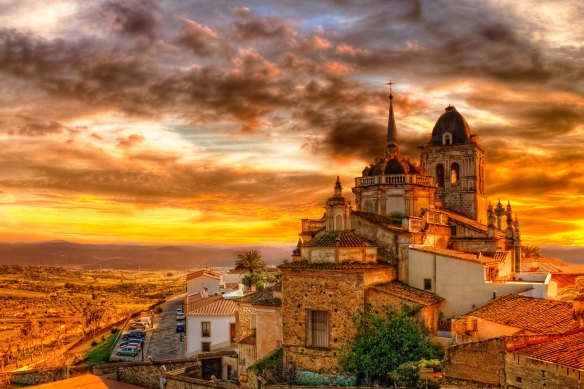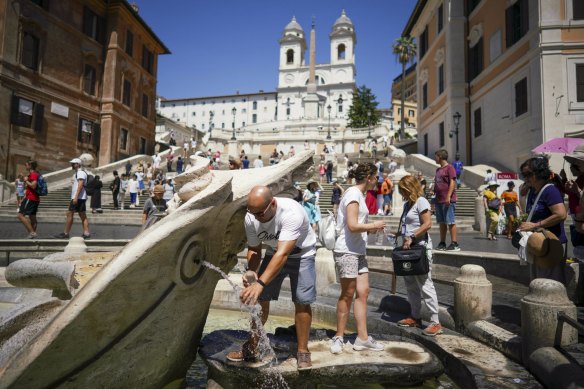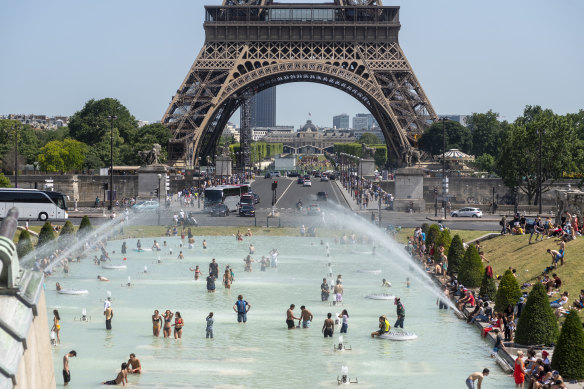Save articles for later
Add articles to your saved list and come back to them any time.
It should be pretty nice in the south of Spain in early October. This is the bottom edge of Europe, about as far south as the continent goes, so you can usually rely on warm weather persisting even as so many northern Europeans begin pulling out their winter clothes.
Except, right now I’m in Jerez, in Andalusia, and it’s not warm. It’s really, really hot.
Jerez: Really, really hot right now.Credit: Getty Images
As I write this, at almost 6pm at the end of the first week of October, it’s 33 degrees. It’s been 33 degrees or above every day since the beginning of the month, even though the expected temperature at this time of year is around 26. That daily high isn’t predicted to dip below 30 for at least another week.
Tomorrow, I travel up to Oviedo, in the far north of Spain. It’s usually much colder up there, with maximum temperatures in early October of around 18 degrees.
When I touch down tomorrow, it will be 32. That’s absolutely scorching for that part of the world.
These temperatures shouldn’t be much of a surprise, given the summer Europe had this year – the hottest ever recorded. The continent was blasted with heatwaves throughout June, July and August, with record high temperatures in multiple countries.
This is the world we live in now. The old rules, the old assumptions about weather patterns and averages don’t necessarily hold up when you’re making travel plans. The conditions you might historically assume you will encounter could turn out to be nothing like the weather you will actually experience.
This is climate change of course, changing weather patterns around the world, higher and lower extremes, more catastrophic events, and higher average temperatures.
Have these changes altered the way you travel, the choices you make, the places you visit and the times you choose to do it? Because they should. And if you’re not taking these changes into account now, you’re doing it wrong.
Tourists cool off in the Barcaccia fountain at the foot of the Spanish Steps in Rome.Credit: AP
Consider southern Europe, for example. It used to be a given that you would want to be here for summer. That’s high season. That’s the peak of popularity, among Europeans who have their holidays from work and school around then, but also among Australians who want to enjoy some sunshine and the good life in Greece, Italy, France and beyond.
Except, did you see the weather this year? In Prague in July it got to 38 degrees. In Athens, it got to 43 degrees. In Rome, there were strings of days over 40 degrees.
Is that the weather you want on your holiday? Is that sunshine and the good life?
Whatever it is, it’s going to be increasingly common. I wouldn’t be planning a southern European getaway at the height of summer any more. Northern Europe, sure. But Italy, Spain, Greece, the south of France? It’s too uncomfortable.
Parisians and tourists cool off in the Trocadero esplanade fountain near the Eiffel Tower in Paris.Credit: Bloomberg
High season for travellers to Europe, and in many northern hemisphere destinations focused on warm weather, is going to change – in the future it’s likely most people will want to visit during what we used to consider the shoulder seasons, months like April and May, and September and October, when it’s still very hot, though tolerable (it’s a top of 30 degrees in Rome today, as I write this, which is still pretty sweaty).
Other travel habits will have to change due to climate change, too. Booking a ski trip now, anywhere in the world, is fraught with the possibility of disappointment. I love skiing and snowboarding, but a very expensive holiday that is so weather-dependent, in a climate where snowfall is becoming less reliable, is a difficult proposition.
There will probably be some freakishly great snow seasons at resorts around the world in coming years. But there are likely to be far more disastrous seasons, where a beer on the terrace will be a lot more inviting than a grass-covered mountain.
Travel insurance can’t help you with dud snowfall, but still, I would be looking carefully at the policies you book now to see what’s covered. Dramatic weather events known as “acts of God” – hurricanes, cyclones, storms, floods, fires – are these days becoming more common, and you really need cover in case of being stranded, or injured, or worse.
All of this is bad news. But it gets worse. Because to properly discuss this problem, you have to face up to an awkward truth: climate change is affecting travellers, but it’s also caused, in part, by travellers.
These changing circumstances and weather patterns around the world are being caused by you, and they’re being caused by me. You can’t fly to the other side of the world in a plane spewing carbon and then just marvel at how hot it is when you get there.
All of us have a responsibility to lessen our impact now, to reduce the amount of flying we do overall, to offset carbon emissions where possible, to make even just small tweaks to the way we move around the world and the frequency with which we do it to try to arrest the slide.
I’m sure I’m not the only one who is feeling the heat.
The latest travel news, tips and inspiration delivered to your inbox. Sign up now.
Most viewed on Traveller
From our partners
Source: Read Full Article



